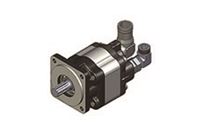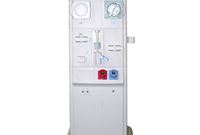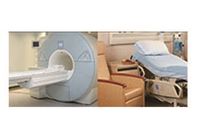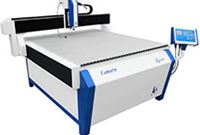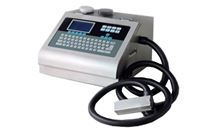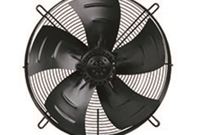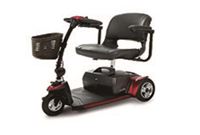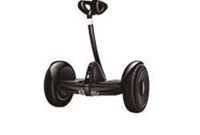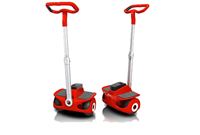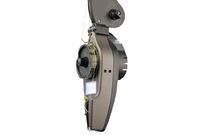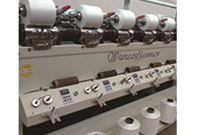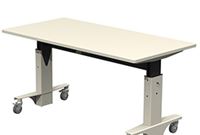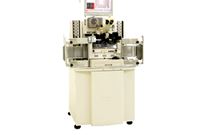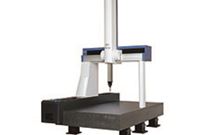- Q: Do I have to run a motor at the rated voltage?
- A:
No. The voltage shown for the available motor windings is listed as a reference voltage, and it is just that. Certain motor parameters, including no-load speed, peak torque, and peak current are voltage dependent. Therefore, a voltage must be chosen in order to show these values. The choice is subjective to a degree, but provides a convenient way of comparing different motor windings.
- Q: Are your motors and gearmotors reversible?
- A:
Yes. All of our brush-commutated units are reversible. Simply reversing the polarity to the motor terminals or leads will reverse the output direction of our brush-commutated units.
- Q: Does IMS offer any EMI/RFI filtering?
- A:
Yes, IMS offers custom EMI/RFI filters to meet CE requirements or other regulatory qualifications.
- Q: Can I buy replacement brushes, gears, etc?
- A:
Since IMS products are mainly focused on the OEM industrial and automation applications, generally all our motors will be manufactured according to the strict technical standard after qualification testing or field testing is finished. These OEM’s will normally call the design where maintenance of brushes or gears arenot required during the machine’s lifetime. So we normally do not supply replacement brushes and gears. Please also be aware that while it is generally technically possible to replace the brushes or brush assemblies, it is not always practical. By the time brushes have finally worn out, significant brush-dust has typically accumulated within the motor. Additionally, the commutator, bearings, and gears have also experienced some degree of wear. These conditions are often impractical to correct and will typically contribute to a reduced time to failure than was experienced with the original brush set.
- Q: What is the lifetime of brush motor?
- A:
This is a tricky question to answer in a short paragraph. The life of the brushes, bearings, and gearbox (if used) all play an important role in the longevity of a Brush DC Motor. Most commonly, Brush DC Motor life expectancies range from 1,000 to 5,000 hours of operation, although actual service life varies. Brush DC Motor design, operating current, speed, voltage, rotation direction, duty cycle and other conditions are all contributing factors. Please contact IMS engineering for more information.
- Q: What is a brushless motor?
- A:
A Brushless DC (BLDC) motor is a rotating electric machine where the stator is a classicthree-phase stator like that of an induction motor and the rotor has surface-mounted permanent magnets. In this respect, the BLDC motor is equivalent to a reversed DC commutator motor(or brush motor), in which the magnet rotates while the conductors remain stationary. In the DCcommutator motor, the current polarity is altered by the commutator and brushes. On the contrary, in the Brushless DC motor, the polarity reversal is performed by power transistors switching insynchronization with the rotor position.
Therefore, BLDC motors often incorporate either internalor external position sensors to sense the actual rotor position or the position can be detectedwithout sensors. The BLDC motor is driven by rectangular voltage strokes coupled with the givenrotor position. The generated stator flux interacts with the rotor flux, which is generated by arotor magnet, defines the torque and thus speeds of the motor. The voltage strokes must be properlyapplied to the two phases of the three-phase winding system so that the angle between the statorflux and the rotor flux is kept close to 90° to get the maximum generated torque. Due to this fact, the motor requires electronic control for proper operation.
- Q: What is the integrated control brushless motor?
- A:
IMS can provide BLDC motors with OR without integrated control options. The internal control option is a cost effective solution; however, it is restricted by voltage range, operating temperature, and current draw. The BLDC motors with internal control are normally designed for light and relatively constant load applications, such as fans, pumps, and small household appliances. If more output power or alternate voltage ranges are required, an external control is recommended.
- Q: Does IMS have any BLDC motor withsensorless drive?
- A:
Ordinarily, brushless DC motors utilize Hall Effect Devices (HFD) to sense the rotor position which subsequently enables an electronic device known as a drive to commutate the motor. With the development of microchip technology, the Sensorless BLDC drives do not require HFD’s to provide feedback from the motor. Instead, sensorless BLDC drives detect a motor’s naturally produced back-EMF to determine the best method of commutation. The most common technique uses a ramp-up pattern to energize two motor phases while monitoring the third phase for back-EMF. This technique requires the drive to initially orient the rotor to a known position. Next, two phases are energized based on a ramp-up pattern such as AB-AC-BC-BA-CA-CB. As the motor increases speed, a proportionate amount of back-EMF is produced by the motor on the non-energized phase. When the amount of back-EMF becomes sufficient enough for the drive to sense, the drive will switch over from the ramp-up technique to a back-EMF, “zero-crossing”, technique.
Sensorless brushless DC drives can be internal OR external of the motor body. From a mechanical construction standing point, it is more reliable than hall sensor type drives, because it eliminates the usage of HFD’s, which eliminates a potential failure mode. But from the electric side, it is less reliable than a sensor type because of its two immanent characteristics:
***The DC motor must easily rotate at a minimal speed under light load conditions to generate sufficient back-EMF for the drive to sense.
***Sudden changes in the load can cause the back-EMF loop to become out of sync and result in a loss of speed and torque.
So the short answer is “Yes”, IMS can provide a motor with sensorless drive, however usage of a sensorless drive is really dependent on the detailed requirements of the application.
- Q: How do I control speed and keep it constant?
- A:
A sophisticated control system would be required to keep the speed regulated to a tight tolerance. Utilizing an encoder feedback, the customer’s control can monitor and adjust the 0-5VDC input to <1%. This will allow the closed loop speed regulation needed for tighter tolerance speed control. Current tolerance on speed regulation for standard integrated controls is <5%. Speed can be regulated over a range of torques. This is a key benefit when comparing BLDC to brush motors.
- Q: Are there any noise benefits of a Brushless motor?
- A:
Yes, with the elimination of brushes, BLDC motors can be regulated to slower operating speeds without sacrificing torque. Brushless motors can also utilize skewed magnets to reduce the effect of cogging. For even higher requirement noise sensitive applications, we could utilize the sine-wave driver to reduce the noise even lower.
